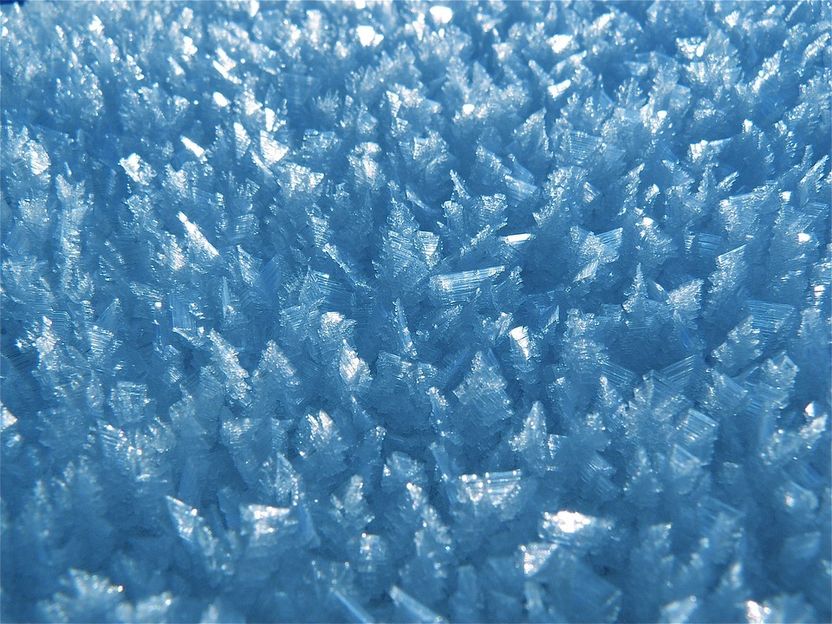Scientists getting warmer on mimicking anti-freeze in nature
Researchers from the University of Leeds have taken an important step forward in mimicking nature's prowess at protecting cells from deep-freeze conditions.

Survivor, pixabay.com, CC0
The new research reveals how glycerol prevents ice crystals from forming in water as the solution is cooled to -35°C, with important implications for improving cryoprotectants used in fertility treatments and food storage.
Dr Lorna Dougan from the University's School of Physics and Astronomy, who leads the research group, said: "The experiments provide more insight into the fundamental properties of water. It raises questions about what cryoprotectants are doing in living organisms and could help us take steps to understanding how these organisms survive.
"If we understand what glycerol is doing we might be able to fine-tune some of these cryoprotectants that are used to find more effective combinations."
Cryoprotectant molecules, including glycerol, play an important role in protecting cells and tissues from harmful ice crystals when they are cooled to sub-zero temperatures during freeze storage. Experts have adopted the use of cryoprotectants in fertility treatments and food storage, but not as effectively as in nature.
It is the ability of organisms that can survive in extreme cold environments - known as 'psychrophiles' - that inspired the team of physicists to unpick the biological rules that allow their survival.
In winter months, for example, the Eastern Wood frog in North America survives being frozen to temperatures as low as -8°C for weeks, and then in spring thaws out and continues to live perfectly healthily.
To understand how reptiles like the Eastern Wood frog can freeze and thaw, the team used a Science and Technology Facilities Council (STFC) instrument called SANDALS that was purpose-built for investigating the structure of liquids and amorphous materials.
They wanted to answer the fundamental question of how cryoprotectants alter the structure of water at low temperatures, as it is the water structure that is so important in leading to potential ice damage.
The SANDALS instrument allowed the team to see, at the molecular level, that the water and glycerol segregated into clusters. When they looked in more detail, they found the water looked similar to a low density form of itself, showing all the signs it was about to freeze but then it did not. Instead, the glycerol molecules encapsulated the water, preventing the formation of an icy network.
The team will now use these results as a platform for discovering the next generation of cryoprotectants.
Original publication
J. J. Towey, A. K. Soper, and L. Dougan; "Low-Density Water Structure Observed in a Nanosegregated Cryoprotectant Solution at Low Temperatures from 285 to 238 K"; The Journal of Physical Chemistry B; 2016
Most read news
Original publication
J. J. Towey, A. K. Soper, and L. Dougan; "Low-Density Water Structure Observed in a Nanosegregated Cryoprotectant Solution at Low Temperatures from 285 to 238 K"; The Journal of Physical Chemistry B; 2016
Organizations
Other news from the department science

Get the chemical industry in your inbox
By submitting this form you agree that LUMITOS AG will send you the newsletter(s) selected above by email. Your data will not be passed on to third parties. Your data will be stored and processed in accordance with our data protection regulations. LUMITOS may contact you by email for the purpose of advertising or market and opinion surveys. You can revoke your consent at any time without giving reasons to LUMITOS AG, Ernst-Augustin-Str. 2, 12489 Berlin, Germany or by e-mail at revoke@lumitos.com with effect for the future. In addition, each email contains a link to unsubscribe from the corresponding newsletter.
























































